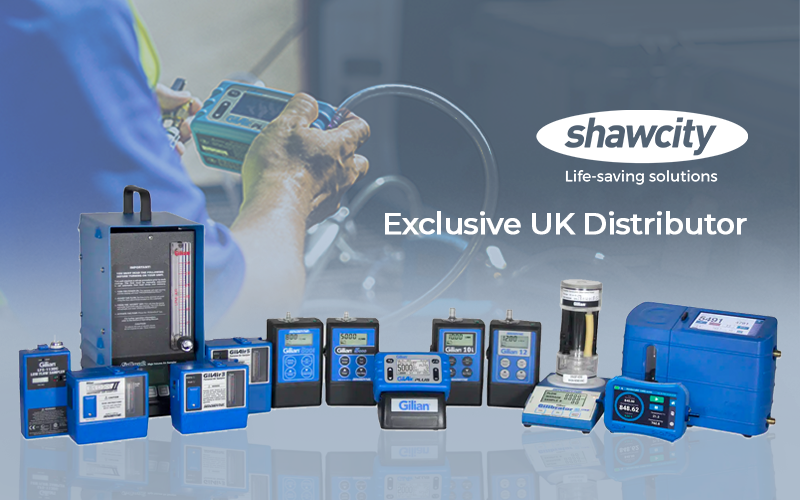In workplaces where employees face exposure to hazardous airborne contaminants, respiratory protection plays a critical role in health and safety strategies. However, even the most advanced respirator is ineffective without a secure, personalised fit. Ensuring that fit is where Quantitative Fit Testing (QNFT) comes in, as a rigorous, objective method that delivers data-backed assurance of proper respirator performance.
Unlike the older, subjective Qualitative Fit Testing (QLFT), which uses taste or smell-based pass/fail results, Quantitative Fit Testing offers a precise measurement of respirator leakage through a numerical result known as the Fit Factor. This method has gained significant traction across sectors such as construction, chemical manufacturing, and healthcare, where exposure risks are high and safety standards are increasingly stringent.
The Case for Fit Testing
Workplace safety regulations in the UK, require that tight-fitting respirators be tested for a proper fit before use and on a regular basis. A mask that doesn’t seal properly may allow contaminants to enter, undermining the performance of the respirator entirely. Many respiratory conditions, from silicosis to occupational asthma, can result from insufficient protection due to a poor fit.
What complicates the fit of RPE is the uniqueness of each wearer’s face. Variations in bone structure shape and size, facial hair, scarring, and weight can all affect whether a mask forms a reliable seal. Therefore, everyone and each mask type must be tested to ensure a sealed and safe fit.
Quantitative vs. Qualitative Methods
While regulatory bodies accept both QNFT and QLFT, they differ significantly in approach. QLFT relies on a test subject's ability to detect an introduced agent, usually a bitter or sweet aerosol, inside a hood while performing movements. If the agent is detected, the respirator fails the test. Though inexpensive and simple, QLFT's effectiveness is constrained by its subjective nature, the fact that people have different levels of sensitivity when it comes to taste and limited suitability for high-risk environments.
In contrast, QNFT uses scientific instruments to measure particle leakage into the mask. The Fit Factor produced represents the ratio of particles outside the mask to those inside or the leak rate. A higher Fit Factor indicates better protection.
Techniques in Quantitative Fit Testing
Two primary technologies support QNFT: Ambient Particle Counting (APC) and Controlled Negative Pressure (CNP).
 Ambient Particle Counting (also known as Condensation Nuclei Counting) assesses fit by comparing concentrations of airborne particles inside and outside the respirator. This technique is compatible with most mask types, including disposable FFP1, FFP2, and FFP3 masks, and is widely adopted due to its flexibility. However, it relies on a stable ambient particle count and potentially an artificial aerosol generator to create testing conditions, which can limit field use.
Ambient Particle Counting (also known as Condensation Nuclei Counting) assesses fit by comparing concentrations of airborne particles inside and outside the respirator. This technique is compatible with most mask types, including disposable FFP1, FFP2, and FFP3 masks, and is widely adopted due to its flexibility. However, it relies on a stable ambient particle count and potentially an artificial aerosol generator to create testing conditions, which can limit field use.
Controlled Negative Pressure operates by creating a vacuum within the mask and measuring the airflow needed to maintain the pressure and any leak rate. This method doesn’t require any ambient particles or consumables and is ideal for reusable half and full-face masks. It is also highly portable and suitable for outdoor or remote testing locations. However, it isn’t compatible with filtering facepiece respirators (FFPs), as the vacuum may cause structural deformation.
Comparing Technologies: APC vs. CNP vs. Qualitative Testing
Recent innovations by manufacturers such as OHD have changed the traditional fit testing industry and led to integrated systems like QuantiFit2 and AeroFit, both of which support digital data storage, battery-powered operation, and compatibility with centralised fit test management software. These systems allow safety teams to flexibly switch between APC and CNP, depending on the needs of a given worksite or individual user.
To clarify how these methods compare, here's a summary of their key capabilities:
The portability and cross-compatibility of modern systems enable flexible deployment in various settings, from mobile testing stations to large-scale industrial operations. Their ability to store data digitally and integrate with software tools makes them ideal for ongoing compliance and audit trails in a variety of settings.

Advantages of Quantitative Fit Testing
The appeal of QNFT lies in its scientific precision. It delivers consistent, quantifiable
results that are not subject to individual perception. For employers and safety professionals, this ensures not only compliance with legal requirements but also greater confidence in the actual protection being provided.
Moreover, as technologies have advanced, QNFT equipment has become more accessible and user-friendly. Newer devices can operate without the need for additional tablets or Bluetooth, have colour touchscreen interfaces, and perform fit tests silently, an important feature for environments where discretion or quiet operation is valued, not least reducing ambient noise for the fit tester themselves.
Digital fit testing data storage also streamlines recordkeeping and auditing. This is particularly useful for large organisations managing hundreds of workers across multiple sites, as test results can be centrally archived and reviewed.
Challenges and Considerations

Despite its advantages, Quantitative Fit Testing presents some logistical challenges. Equipment costs, training requirements, and test environment constraints can make implementation more demanding than qualitative methods. APC systems, for example, require an environment with adequate airborne particles or must generate them artificially. CNP systems, though more flexible in location, are limited in the types of masks they can test.
Additionally, QNFT should be performed as part of the initial selection of the RPE and should be factored into an organisation’s RPE programme to take account of people’s faces changing over time due to ageing, weight fluctuation, medical procedures, or facial hair. Any of these changes can compromise the effectiveness of a respirator’s seal.
Regulatory Guidelines and Best Practices
In the UK, the Health and Safety Executive (HSE) does not approve nor recommend any particular fit testing equipment. However, it does provide direction on fit testing through guidance document INDG479. It stipulates that fit testing must be conducted by a competent person for each mask model a worker uses. And, while certification for fit testers isn’t mandatory, it is highly encouraged. The Fit2Fit accreditation scheme, developed by the British Safety Industry Federation (BSIF), is a widely recognised certification that indicates proficiency in fit testing practices.
Looking to the Future
With the rise of respiratory risk awareness following the COVID-19 pandemic, and as industries adopt more rigorous health and safety standards as new risks are identified and come to the fore, the role of Quantitative Fit Testing is more prominent than ever. Technological advancements, like dual-mode testing devices, cloud-integrated data storage, and software-enhanced test management, are making QNFT both more accurate and easier to implement at scale.
Ultimately, the goal of Quantitative Fit Testing is not just compliance, but safety. It offers a reliable, replicable way to ensure that kit meant to protect workers is doing its job effectively. In environments where exposure to airborne hazards is a constant threat, that assurance is not a luxury; it’s a necessity.
Shawcity is the only fit-testing instrument supplier to offer both APC and CNP technologies in the UK and Ireland, catering for every customer’s needs. Each unit is available to purchase or hire and can be serviced in the UK, eliminating the need to send units back to the U.S. manufacturers.
Contact us to find out more about the game-changing QuantiFit2 and AeroFit testing systems, or to arrange a free demonstration on:
📞 01367 899419 or 📧 solutions@shawcity.co.uk.

-1.png)

%20(6).png)







